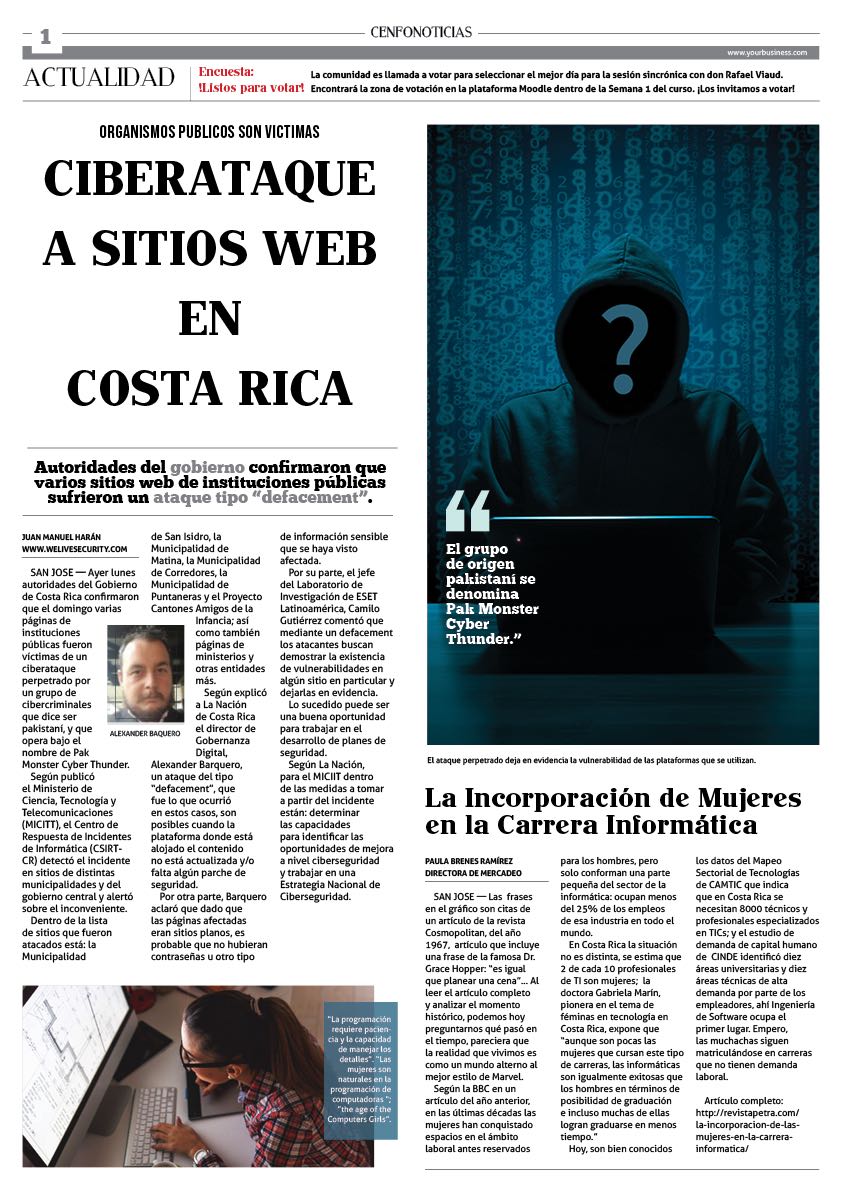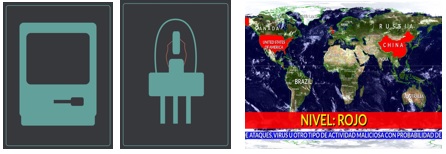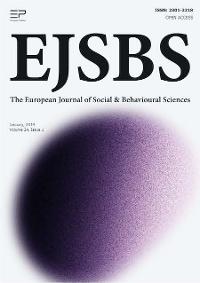Abstract
Despite the advances in technology, passive information transfer remains at the core of online course design which results in lower student engagement and instructional effectiveness. This study focuses on the design, implementation and delivery of an online learning experience that combines the creation of a storyworld based on a ubiquitous computing framework, supported by the epistemic, set and social aspects of networked learning. Our aim is to analyse experience dynamics and learning strategies that emerge in a narrative-based scenario. The Community of Inquiry framework, which has been extensively validated, is being used to classify different interactions. This study is in progress but initial coding shows that response to the critical incident is significantly higher when compared to traditional forums. We have identified strong group cohesion and emotional expression. Further improvements in instructional strategies are suggested.
Keywords: Online Learning, Networked Learning, Storyworlds, Community of Inquiry, Social Presence
Introduction
The way learning takes place in formal academic settings has traditionally differed from the way training is conducted in organizations. Whereas the former tends to focus on theories and techniques, the latter is more practical. Problem solving, decision-making and critical thinking are frequently cited skills required in professional settings. Often these terms are used interchangeably to describe the type of higher-order thinking and criteria required on the job, regardless of the domain (Budzyna, 1995; Miller, 1997; Peak, 1997). This is also called ‘clinical ability’, that is, the professional not only relies on pure facts and knowledge but also uses her judgment and experience to select the appropriate theories and tools in view of the task and the context (Miller & Leroux-Demers, 1992). The variability of these tasks and contexts in work environments, plus their ill-structured nature pose serious difficulties for advanced knowledge and skills acquisition (Spiro, Feltovich, Jacobson, & Coulson, 1992).
Because online courses frequently support well-structured instruction, they focus mainly on theories and techniques, and tend to be sequential in nature, progressing from simple to complex. In many cases, the content is text-heavy, despite the use of interactivity and multimedia elements (Ahdell & Andresen, 2001). This, added to the linearity of content, makes some e-learning courses plain boring (Aldrich, 2004).
One alternative is to use case studies to give students a more holistic approach to the subject, requiring them to use a broad set of skills and knowledge in scenarios close to real settings. Games and simulations also try to achieve this goal by creating experiential environments that focus on operational rules derived from real contexts (Miller & Leroux-Demers, 1992).
Networked learning offers the possibility of taking the gamified case-based approach even further, in particular regarding personalized feedback and deeper learning (Evans et al., 2014). Through the use of ubiquitous computing, it is possible to design more connected and constructivist environments where a sense of social presence, which is important in retaining students (King & Alperstein, 2014), can be promoted (Bastos et al., 2013). Furthermore, design guides for the creation of effective learning networks has been presented in recent years (Carvalho & Goodyear, 2014; Haya et al., 2015). This study looks at the creation of a WhatsApp-based storyworld designed to introduce an inciting incident in an introductory course on information technologies. The main hypothesis is that a narrative-based scenario will encourage social interaction, support indexing (Schank, 1990) and foster constructivist learning strategies.
From a theoretical point of view, the design process has taken into account the concept of networked learning which is not new but has evolved as new technologies become available, and now incorporates the concept of experience, with its many connotations, both individual and social (Dohn et al., 2018). Networked learning however does not provide a tool to analyse the kind of interactions that appear within networked environments. For that, we use the Community of Inquiry framework (Garrison, 2015). Both topics are briefly discussed here.
Networked Learning
The concept of learning that can take place in a connected world is acquiring more relevance as communications technologies become more advanced and widespread. There are several definitions of networked learning (Sloep, 2016) but its most commonly accepted characteristic is the use of technology to enable connectivity between learners, learners and teachers, and learners and resources (Dohn et al., 2018). Carvalho and Goodyear (2016) conclude that a good evidence of networked learning should:
- allow one to identify the boundaries of a learning network,
- use vocabulary not often used in formal education,
- consider both social and technological aspects, and
- both individual and collective action contributes to the overall dynamics.
Apart from connectivity, networked learning can create experiences that merge seamlessly with different types of environments for continuous or pervasive learning, use technology as collaborative or individual tools, goes beyond content in order to foster deep learning, makes use of distributed expertise and social agreements, and allows individuals and groups to construct knowledge.
The design of a networked learning space requires dealing with three aspects (Sloep, 2016). The epistemic aspect is related to the activities that the learners have to perform to reach certain outcomes. The social aspect refers to connecting people with shared goals. Finally, the set aspect refers to the technological and narrative context that enables interactions. The Community of Inquiry framework provides validated tools to analyse such interactions.
Community of Inquiry
The Community of Inquiry framework considers the educational experience as the result of three overlapping elements. Cognitive presence refers to the capacity of learners to construct meaning through sustained communication. Teaching presence refers to the educational setting and facilitation strategies. Finally, social presence is the ability of learners to project themselves through the communication technology involved (Garrison, 2016). While the Community of Inquiry is sustained by technological affordances and like-minded individuals, it is also important to remember that in distance education this discussion should be ongoing. From the systemic point of view of a game-based experience, interaction loops should keep dynamics going (Sellers, 2017).
The Community of Inquiry framework takes into account that individuals learn and think in context, by participating in groups without relinquishing individual responsibility. Higher order skills develop through collaboration through the affordances offered by technology. In other words, the kind of interactions are affected by the types of technology that are available (Garrison, 2016).
In connected environments, social presence has attracted significant attention (Kreijns et al., 2014). As people communicate through forums, social networks, messaging apps and other channels, these culturally accepted modes are being increasingly used in learning environments. In online learning, the degree of social interaction has been quoted as a strong predictor in course retention and performance (King & Alperstein, 2014).
Purpose of the Study
As mentioned earlier, the objective of this study was to observe emerging interactions and learning strategies that result within a storyworld reflecting a real scenario. For this purpose, an introductory course on information technologies was selected. An analysis of previous iterations of the course showed that it was mainly theoretical at the beginning which led to a decrease in student engagement. A similar pattern appeared in each iteration.
Research Methods
3.1. Design
In order to introduce the topics, the instructional design department decided to create an inciting incident that would trigger dramatic interest on general computation topics within the theme of the fourth revolution characterized by ubiquitous computing, artificial intelligence, and genetic modifications among other advancements (Schwab, 2017). Although an LMS was used to deliver courses, it was decided that a more culturally relevant tool should be used to create the illusion of immersion. Recent studies have shown that the use of instant messaging fosters social presence and is a suitable communication method within online courses (Gunter & Carvalho, 2018; Huang, 2017; Lam, 2015; Robinson et al., 2015; Yuhan et al., 2018).
The story The Fourth Revolution became the set aspect of the network and was introduced to a group of 24 students via a WhatsApp group using the same name. A brief introduction by university officials was followed by a cinematic-type opening followed by media created specifically for the experience. Several newscasts were implemented to introduce topics as shown in figure 1. The teacher was introduced via a newscast, and the first session was announced as the presentation of an expert within the story at the time of the first synchronous session.

In addition, various newspapers were also designed to complement the illusion of an immersive narrative, as shown in figure 2. These included messages that would otherwise be posted on the LMS. All articles were accurate and made part of university blogs, presentations on the role of women in computer science, as well as information on topics relevant to the student population such as demand for computer engineers and the latest industry trends.

The first topic in the course was the history of computing, which became the epistemic aspect of the network. It was previously taught through text-based content following a historical timeline. A few videos were included as well. Additional interviews showed that this topic was considered to be very heavy and few students reviewed the entire content.
As part of the network’s social aspect, each student was given a digital card that was part of one of the generations of the history of computing. Each generation had three cards and students had to check available resources to determine to which generation the cards belonged to. Students had to interact without much guidance to identify all sets of cards in each generation. Each time a generation was completed, areas in a world map were secured from cyberattacks, and a key characteristic of the fourth revolution was added to their toolkit.

3.2. Design Sources and Methodology
The inciting incident was presented at the very beginning of the course. One person from the instructional department acted as coordinator and the professor was naturally included in the conversation but before his appearance in the story he did not have a specific role. In previous versions of the course all interactions were handled through the LMS. The way to interact with other students and the teacher was through forums. In particular, the discussion forum was the centre of all interaction between students. As in many traditional courses, participation in the forum was graded. In this case, participation in the inciting incident was not graded.
For the purpose of this study, the logs provided by the LMS were analyzed for three previous iterations. In the case of the inciting incident scenario, the WhatsApp conversation was downloaded and analyzed. In both cases the Community of Inquiry coding scheme was used to label all interactions. Analysis was carried out using a qualitative software known as Quirkos. The software allows for a visual inspection of different categories as coding takes place.
Findings
Table 1 shows the results of the analysis for the three previous courses (Course A, Course B and Course C) and the current course using the inciting incident approach (WhatsApp). It can be seen from the number of quotes that there was a very remarkable increase in interactions between previous courses and the current one. It is also important to note that the duration of the courses was the same.
The analysis of interactions in previous courses showed a steady pattern in both social presence and teaching presence. In social presence the most dominant category was open communication. Addressing other course participants was done in a formal manner. This category was followed by direct instruction in teaching presence. The forums acted as places where students could ask questions but in general questions were answered by the teacher. Very few interactions were seen between students, as is evidenced by the group cohesion category. This in itself is not bad but shows an approach that is more consistent with a hierarchical individual style of teaching/learning (Elmore, 2017). It is interesting to note that all three previous courses showed a similar pattern as students used the same tools to interact with peers and the teacher.
In contrast, the conversation on WhatsApp was quite active, even though it was not graded. We saw a decrease in open communication which was somewhat interesting because although students communicated with each other, they rarely addressed each other directly. This could be due to the fact that each intervention on WhatsApp appears next to the name of the person posting a comment. The conversation was fluid and informal.
We can see in the inciting incident that group cohesion was the most dominant category. While the group conversation focused initially on the inciting incident, the WhatsApp group was continued to be used by students and the teacher to discuss things related to the course in general after the scenario ended. Students were eager to help each other, and answer questions related to the case as well as questions related to other matters including course difficulties as well as personal problems related to technology and accessing the course.
Another dominant category was emotional expression, evidenced through the use of emoticons and also through different language expressions. Whereas some emotional expressions did appear on the forums, they were limited. Regarding teaching experience, direct instruction was also the most dominant category. It was followed by instructional management.
In all courses, cognitive presence was not evidenced in the interactions. A strict approach to cognitive presence was adopted in this study, meaning that basic exchanges where only basic clarification or confirmation was provided was not considered cognitive presence. Sophisticated discussions including the formulation of new problems, divergent views or solution testing were not present. The discussions related to the digital cards were too basic and were not considered evidence of cognitive presence even though brainstorming and information exchange did take place at very low levels.
In the case of previous courses, even though there were assignments that used the forums for knowledge building, students answered in additional interviews that they did so mostly because of the grade, not because they found contributions interesting. This is an important point because if they were to be coded, interactions would show some degree of cognitive presence but since they were done to obtain a grade and not for knowledge construction, whether there is a real impact on learning is to be seen.
In the WhatsApp group, it was a missed design opportunity because from the beginning the interaction was conceived to target social presence, and cognitive presence was not considered. From the amount of interaction obtained on WhatsApp, it is believed that this could also be a platform for deeper discussions and the mutual construction of knowledge. However, interactions of this kind have to be preceded by the right questions and adequate scenarios. The scenario in this case did not have enough depth to foster knowledge building, but future scenarios will.
Conclusions
Interactions generated by an inciting incident on WhatsApp in an introductory course on information technologies were analyzed and compared to those in forums in previous course iterations. Strong social presence was evidenced as a result of the inciting incident although teaching presence remained relatively unchanged. Cognitive presence evidenced by deep construction of knowledge was not observed.
The objective of a networked learning scenario was achieved as there was strong evidence that individual and collaborative actions drove the experience dynamics, the boundaries of the network were very clearly defined (perhaps too much so in this case), and exchanges were very informal. Naturally both the social and technical aspects were key components of the experience. The degree of peer support was quite strong including significant time investment in helping other students solve issues not directly related to the course content.
The next step in this study is to extend the immersive experience to the entire course, and to include network channels in the construction of knowledge, i.e. cognitive presence. It is important to note that from the design point of view, networked learning cannot be ‘designed’ but ‘designed for’. There was no way to predict the types of interactions that emerge in this experience, but several lessons can be applied to generate the spaces and situations that encourage students to participate in creative and unexpected ways.
References
Ahdell, R., & Andresen, G. (2001). Games and Simulations in Workplace eLearning. Unpublished Master Thesis, Norwegian University of Science and Technology, Trondheim.
Aldrich, C. (2004). Simulations and the Future of Learning - An Innovative (and Perhaps Revolutionary) Approach to e-Learning). San Francisco: Pfeiffer.
Bastos, H. P. P., da Silva, J. K. K., Bercht, M., & Wives, L. K. (2013). Proposal of a Model and Software for Identification of Social Presence Indicators in Virtual Learning Environments. In Ubiquitous and Mobile Learning in the Digital Age (pp. 159-172). Springer, New York, NY.
Budzyna, J. (1995). On Target! Strategies for Effective Problem Solving and Critical Thinking in the Workplace: Colorado State Community College and Occupational Education System, Denver.
Carvalho, L., & Goodyear, P. (2014). The architecture of productive learning networks. Routledge.
Dohn, N. B., Cranmer, S., Sime, J. A., de Laat, M., & Ryberg, T. (Eds.). (2018). Networked Learning: Reflections and Challenges. Springer.
Elmore, R. (2017). Leaders of Learning. Retrieved from https://www.edx.org/course/leaders-learning-harvardxgse2x-2
Evans, M. A., Pruett, J., Chang, M., & Nino, M. (2014). Designing personalized learning products for middle school mathematics: The case for networked learning games. Journal of Educational Technology Systems, 42(3), 235-254.
Garrison, D. R. (2015). Thinking collaboratively: Learning in a community of inquiry. Routledge.
Gunter, G., & Junia de Carvalho, F. B. (2018, June). Mobile Apps for Teacher Education: Identifying Social, Cognitive, and Teaching Presences in Interactions via WhatsApp. In EdMedia+ Innovate Learning (pp. 200-205). Association for the Advancement of Computing in Education (AACE).
Haya, P. A., Daems, O., Malzahn, N., Castellanos, J., & Hoppe, H. U. (2015). Analysing content and patterns of interaction for improving the learning design of networked learning environments. British Journal of Educational Technology, 46(2), 300-316.
Huang, Y. M. (2017). Exploring students’ acceptance of team messaging services: the roles of social presence and motivation. British Journal of Educational Technology, 48(4), 1047-1061.
King, E., & Alperstein, N. (2014). Best practices in online program development: Teaching and learning in higher education. Routledge.
Kreijns, K., Van Acker, F., Vermeulen, M., & Van Buuren, H. (2014). Community of inquiry: Social presence revisited. E-learning and Digital Media, 11(1), 5-18.
Lam, J. Y. (2015). Autonomy presence in the extended community of inquiry. International Journal of Continuing Education and Lifelong Learning, 8(1), 39.
Miller, L. (1997). Better ways to think and communicate. Association Management, 49(13), 71.
Miller, R., & Leroux-Demers, T. (1992). Business Simulations: Validity and Effectiveness. Simulation & Games for Learning, 22(4).
Peak, M. (1997). Are your employees thinking? Management Review, 86(6), 6.
Robinson, L., Behi, O., Corcoran, A., Cowley, V., Cullinane, J., Martin, I., & Tomkinson, D. (2015). Evaluation of Whatsapp for promoting social presence in a first year undergraduate radiography problem-based learning group. Journal of Medical Imaging and Radiation Sciences, 46(3), 280-286.
Schank, R. C. (1990). Tell me a story: A new look at real and artificial memory. Charles Scribner's Sons.
Schwab, K. (2017). The fourth industrial revolution. Crown Business.
Sellers, M. (2017). Advanced Game Design: A Systems Approach. Addison-Wesley Professional.
Sloep, P. B. (2016). Design for networked learning. In The Future of Ubiquitous Learning (pp. 41-58). Springer, Berlin, Heidelberg.
Spiro, R., Feltovich, P., Jacobson, M., & Coulson, R. (1992). Cognitive Flexibility, Constructivism and Hypertext: Random Access Instruction for Advanced Knowledge Acquisition in Ill-Structured Domains. In T. M. D. D. H. Jonassen (Ed.), Constructivism and the technology of instruction: A conversation. Hillsdale, N.J.: Erlbaum.
Yuhan Qiao, Ying Tang, & Hew, K. F. (2018). Student Cognitive Presence in Small Group Collaboration Facilitated by Mobile Instant Messaging. International Journal of Educational Technology and Learning, 2(1), 14-24.
Copyright information

This work is licensed under a Creative Commons Attribution-NonCommercial-NoDerivatives 4.0 International License.


